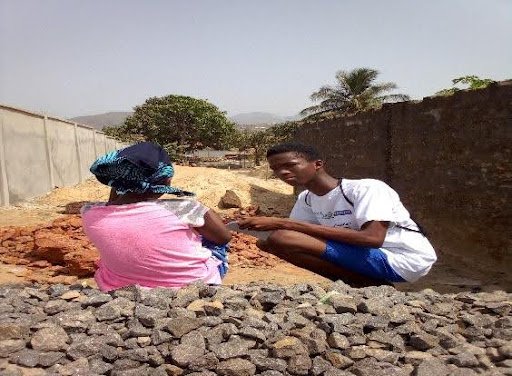


Child labor is a severe problem worldwide, with around 218 million children aged 5 to 17 working, and a staggering 70 percent of them considered victims of child labor.
In Goderich, eight-year-old Gboyama's (not her real name) life is filled with hardships. Instead of going to school like other children, she spends her days breaking stones and selling groundnuts to help her uncle and aunt make ends meet. Every morning, she watches other children going to school while she toils away, feeling unhappy and wearing dirty clothes.
One day, on my way home from school, I saw Gboyama crying bitterly, and my heart went out to her. I asked her why she was so upset, and she could not stop crying as she shared her heartbreaking story. Gboyama is an orphan, living with her uncle and aunt, who work in stone mining to survive. Sadly, they refuse to enroll her in school, instead forcing her to do odd jobs to earn money for them. While her cousins attend school, Gboyama is left breaking stones and doing work not fit for a child.
Her situation is dire; she earns very little each day and faces physical abuse when she refuses to work or sell goods. Her hands are rough from hard labor, and her body is covered in scars. The shame she feels prevents her from interacting with other children in the community, causing her to lose her self-esteem.
Gboyama's right to education and a better life is denied, and she is trapped in a life with no way out. She is being robbed of her right to learn, her right to a safe and nurturing childhood, and her right to a brighter future.
Gboyama's story is heart-wrenching, and it reflects the urgency of addressing child labor and ensuring that every child has access to education and a safe environment to grow and thrive. It is our collective responsibility to protect children like Gboyama, provide them with opportunities for education, and break the cycle of child labor. Every child deserves a chance to dream and achieve their full potential, and together, we can create a world where no child is left behind.
End